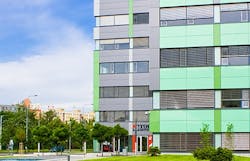DOE Launches “Better Building Zero Energy Districts”
The U.S. Department of Energy (DOE) and the National League of Cities have launched the Better Buildings Zero Energy Districts Accelerator in an effort to move the building market further along to adopt sustainable practices and help districts achieve zero energy use in buildings.
“Zero Energy Districts” are comprised of multipurpose energy-efficient buildings, where the yearly energy delivered to buildings is less than or equal to on-site renewable exported energy. Zero Energy Districts advance the design and construction of energy-efficient buildings, to offset district-wide energy use by aggregating renewable energy sources to power buildings within the districts’ boundaries.
“In American cities, developers, planners, building owners, and others are helping make our communities more efficient — saving money and reducing pollution,” says Kathleen Hogan, DOE Deputy Assistant Secretary for Energy Efficiency. “By committing to zero energy as part of their master planning processes, these communities will create a road map for others to follow.”
The following six partners will implement a detailed master energy plan from the DOE, business, and governance model within three years and report the effects to the market:
- Denver, CO — National Western Center Project and Sun Valley Ecodistrict
- Huntington Beach, CA — Advanced Energy Communities
- St. Paul, MN — Ford Twin Cities Assembly Plant Redevelopment Project
- Fresno, CA — The Fresno Energy Performance District
- Buffalo, NY — Western New York Manufacturing ZNE District
